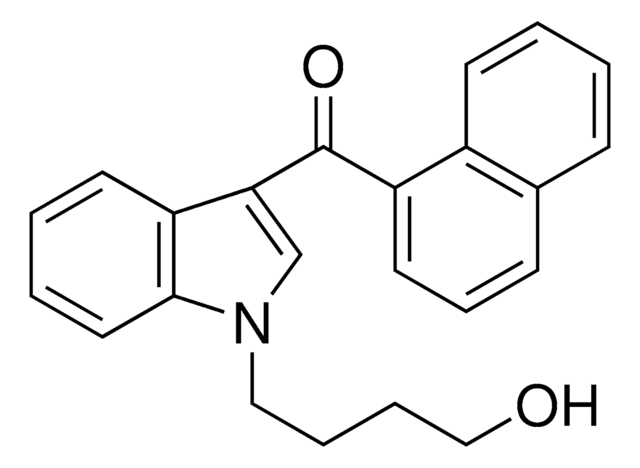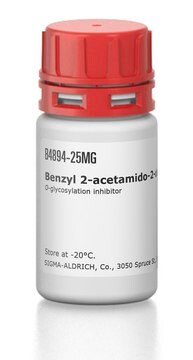SML1620
NGI-1
≥95% (HPLC)
Synonym(e):
5-[(Dimethylamino)sulfonyl]-N-(5-methyl-2-thiazolyl)-2-(1-pyrrolidinyl)-benzamide, ML414
Anmeldenzur Ansicht organisationsspezifischer und vertraglich vereinbarter Preise
Alle Fotos(1)
About This Item
Empirische Formel (Hill-System):
C17H22N4O3S2
CAS-Nummer:
Molekulargewicht:
394.51
UNSPSC-Code:
12352200
NACRES:
NA.77
Empfohlene Produkte
Qualitätsniveau
Assay
≥95% (HPLC)
Form
powder
Farbe
white to beige
Löslichkeit
DMSO: 5 mg/mL, clear (warmed)
Lagertemp.
2-8°C
Biochem./physiol. Wirkung
NGI-1 (ML414) is an inhibitor of Asparagine (N)-linked glycoslysation. NGI-1 inhibits the oligosaccharyltransferase, preventing the attachment to the protein. NGI-1 has been shown to induce senescence in receptor tyrosine kinase dependent tumors.
Lagerklassenschlüssel
11 - Combustible Solids
WGK
WGK 3
Analysenzertifikate (COA)
Suchen Sie nach Analysenzertifikate (COA), indem Sie die Lot-/Chargennummer des Produkts eingeben. Lot- und Chargennummern sind auf dem Produktetikett hinter den Wörtern ‘Lot’ oder ‘Batch’ (Lot oder Charge) zu finden.
Besitzen Sie dieses Produkt bereits?
In der Dokumentenbibliothek finden Sie die Dokumentation zu den Produkten, die Sie kürzlich erworben haben.
Angelyn Larkin et al.
Biochemistry, 50(21), 4411-4426 (2011-04-22)
Asparagine-linked glycosylation involves the sequential assembly of an oligosaccharide onto a polyisoprenyl donor, followed by the en bloc transfer of the glycan to particular asparagine residues within acceptor proteins. These N-linked glycans play a critical role in a wide variety
Danielle Skropeta
Bioorganic & medicinal chemistry, 17(7), 2645-2653 (2009-03-17)
In a series of investigations, N-glycosylation has proven to be a key determinant of enzyme secretion, activity, binding affinity and substrate specificity, enabling a protein to fine-tune its activity. In the majority of cases elimination of all putative N-glycosylation sites
Cecilia Lopez-Sambrooks et al.
Nature chemical biology, 12(12), 1023-1030 (2016-10-25)
Asparagine (N)-linked glycosylation is a protein modification critical for glycoprotein folding, stability, and cellular localization. To identify small molecules that inhibit new targets in this biosynthetic pathway, we initiated a cell-based high-throughput screen and lead-compound-optimization campaign that delivered a cell-permeable
Ryan A Flynn et al.
Cell, 184(12), 3109-3124 (2021-05-19)
Glycans modify lipids and proteins to mediate inter- and intramolecular interactions across all domains of life. RNA is not thought to be a major target of glycosylation. Here, we challenge this view with evidence that mammals use RNA as a
Unser Team von Wissenschaftlern verfügt über Erfahrung in allen Forschungsbereichen einschließlich Life Science, Materialwissenschaften, chemischer Synthese, Chromatographie, Analytik und vielen mehr..
Setzen Sie sich mit dem technischen Dienst in Verbindung.







